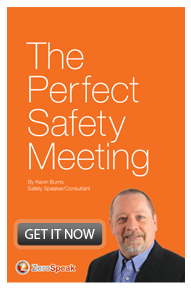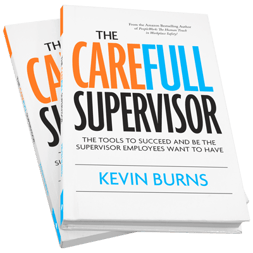Here are three things you can do right now to improve participation in safety meetings and make them lively.

You’ve sat at the back of the room at safety meetings, arms crossed, watching the clock on the wall, going over in your head the things you still had to do that day and waiting for the meeting to be over. You’ve even secretly hoped that no one had any questions so you could simply get out of the meeting and back to work.
Maybe you’ve been the chair of the safety meeting or a presenter looking out on a sea of blank faces with their arms crossed and a look of resignation on their faces. There was not a sign of engagement. In fact, the only movement was to sip from their coffee mug or an occasional side conversation and back of the room giggles.
When You Ask For Nothing, You Get Nothing
Sadly, the problem with safety meetings is that they are one-way lectures. No one is required to ask questions. No one is required to write anything down. No one is told what they are supposed to do with the information that they are given. No one is encouraged to speak up, to ask a question, to make a statement, to challenge anything in the presentations.
Oh, you’ve heard the question being asked: any questions? But you know that you don’t dare ask a question that keeps your fellow workers in that meeting any longer than they have to be. So you shut up. Sit there. Get through it. Get back to work.
Change The Paradigm
But what if we changed the paradigm of safety meetings? What if, instead of just trying to get through it, employees were encouraged to say exactly what is on their mind without fear of retribution?
Safety meetings are not for preaching, scolding, lecturing or even informing. Safety meetings are for engaging, focusing, participating and communicating.
What is needed is more participation, lively discussion, two-way communication, engagement and a desire to be a full participant in safety meetings instead of a spectator being scolded or told what to do.
Active participants engage better and remember more than passive spectators: whether it be a meeting, a sporting event or a wedding ceremony. Every part of life that you are an active participant in has many more vivid memories than those events where you simply watched and paid little attention.
Here are three things you can do right now that will improve participation in safety meetings and make them lively:
1Get rid of injury videos - or make them irrelevant: The Internet is full of videos of people telling their sad story of how they were injured on the job. First, stop showing these at safety meetings. These are injury videos, not safety videos. Safety is NOT the absence of injury. But if you insist on showing them, then create a discussion where the video becomes irrelevant. Challenge your people to discuss what processes they have in place to ensure that the events in the video can not happen in your workplace. Get graphic. Be blatant. Do not allow an injury video to be the only thing people remember from your safety meeting. Make your people discuss why they are much safer.
2Make meeting attendees fix safety problems: It would be safe to say that the same people who are having the incidents and even causing the incidents on your job site are gathered in your meeting room. Do not let them walk out the door without them fixing a problem that they themselves are creating. If you set your room in round tables, then it’s easy to get your people to have small group discussions on safety issues that keep occurring. Give them the problem to discuss and ask them to find ways of fixing it. Then, hear from every group and allow discussion to take place. But keep focused on the issue and jump right in if the discussion is going off the rails. Keep them focused and talking.
3Put paper and pens on the tables and make them write stuff down: Prepare something that they will need to remember like a new directive or a new procedure. Then say, “I need you to write this down and since there are no handouts for this, you need to write it down and hang onto it.” Then give them the information slowly so they have time to write it down. Ask a few people to read back what was just dictated to ensure that they got the message. Do that a lot. Force them to uncross their arms and engage themselves.
Are you treating your people as professionals or amateurs? Raise the bar. Expect them to rise to it. Your safety meetings will get very lively very fast.
For other great ideas for safety meetings, download my free e-book, The Perfect Safety Meeting.



